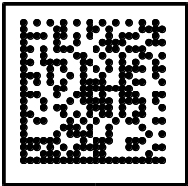NuEra-ID Pty Ltd
BALLINA AUSTRALIA 2478 (ABN 25 126 210 320) Ph:+61 416 276 624
"Helping others to have a future assures our own."
NuEra-ID Pty Ltd
BALLINA AUSTRALIA 2478 (ABN 25 126 210 320) Ph:+61 416 276 624
"Helping others to have a future assures our own."
THE REASONS WHY NuEra-ID's SYSTEM OF UNIQUE IDENTIFICATION IS SIGNIFICANTLY SUPERIOR TO GS1 (Continued)
|
NuEra-ID Method of Individual Identification NuEra-ID's Registry for practical purposes is inexhaustible. NuEra-ID's method of individual identification has, at its core, one registry of 128 bit numbers. The numbers are encrypted and 32 bits are embedded in this number for the purposes of checking its validity once decrypted. The “payload” is thus 96 bits. 96 bits provides a huge range of unique numbers. If a billion, billion numbers were to be issued per year, it would take more than 79 billion years to exhaust the registry. NuEra-ID's Identifier facilitates rapid extraction of data from huge databases. 128 bits was chosen because, at the time of writing, it is the largest number that can be used as a primary key in a database table of databases such as PostgreSQL and Oracle. Unlike the GS1 method of individual identification, with a NuEra-ID identifier being numeric and being the primary key in a database, information relating to that identifier can be located with extreme rapidity; even in a database consisting of many Petabytes2. NuEra-ID's Registry is very simple in its construction and operation. NuEra-ID has been granted a patent by the Australian Intellectual Property Office for the construction and operation of its registry. Patents are also expected from the US, EEU, China and India. The registry is unique in that it ensures there is no wastage of numbers and that each client-system can be allocated numbers, on any number of occasions, in such a manner that all the numbers allocated to a particular client-system will always be serial sequential. The first unique number allocated to a client-system identifies that client-system. The last number indicates the range subtended by the allocation. This means that, for any client-system only two numbers need be kept, that is, the first and the last number issued. The first number for a new client-system is selected by bisecting the largest available free space in the registry. All further (future) numbers for that client-system are then allotted from the point of the last number previously issued. |
 Fig 5. DataMatrix Comprised of Dots NuEra-ID's solution requires 60% less effort when applying barcodes Best Example is a Store. The best example to demonstrate the superiority of NuEra-ID's system of identification in terms of its ease of use and flexibility is to consider its application to the problem of inventory control in an area containing a large number of sensitive and non-sensitive items. Tests performed in the High Security Area of the Defence National Supply and Distribution Centre showed that NuEra-ID's system of individual identification requires around 60% less effort to apply barcodes to items and is significantly more practical to use in the field/workplace than GS1. |
Serial-Tracked and Quantity-Tracked Items. Some of items in a high security store will be “serial-tracked”, that is, they will be individually identifiable by a serial number. Others will be “quantity-tracked”, ie, the storekeeper has to ensure that the quantity listed on the ledger is actually present in the store. Items will usually be serial-tracked when they are sensitive or expensive. Whether an item will be serial-tracked or quantity-tracked is usually determined as a matter of stores policy decided at the highest level within the organisation. The core reason for this demarcation is that serial-tracking has always, in the past, been far more expensive than quantity-tracking. NuEra-ID extreme low solution changes this paradigm. The Need to Serial-Track can arise unexpectedly. A problem can sometimes arise at the local level where, because of changing or peculiar circumstances, there is a need to serial-track items that are normally quantity-tracked. With the GS1 method this becomes a problem because it is possible the owner of the identifier has never made provision for a register. The user is then forced to fend for themselves by creating a local register or using a register previously created at the organisational level. In the latter case, the user must have communications available and the requisite knowledge to locate and obtain a serial number from the central registry for that stock or manufacturer's part number. Entire Inventory list can easily fit on a modern barcode reader. Every store that is presently being managed by conventional means will have a list (called an inventory) of what is supposed to be in the store. The memory of modern portable barcode readers is such that they can hold an inventory consisting of millions of different line items. |